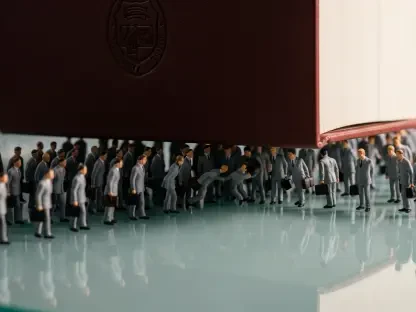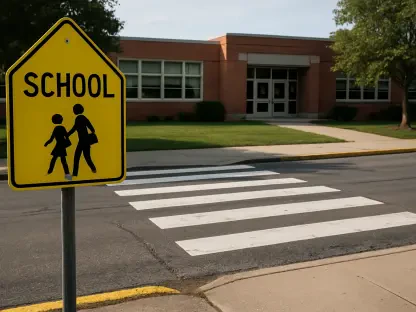In a landmark decision that underscores the evolving landscape of public education, the Olathe Board of Education has voted to close Westview Elementary School, situated at 500 S. Troost St. in Olathe, Kansas, after the current academic year, marking a significant transition for the local community. This unanimous 6-0 decision, made on August 7 with one board member absent, responds to persistent enrollment declines and demographic shifts that have challenged school districts nationwide. Far from abandoning the facility, the board has opted to repurpose the building into a pioneering K-8 alternative education program, setting a precedent as the first of its kind in the region. This strategic move not only addresses the immediate issue of underutilization but also reflects a broader commitment to adapting educational spaces to meet the changing needs of students and families. As school districts grapple with shrinking student populations and budget constraints, the transformation of Westview signals an innovative approach to sustaining community resources. This article delves into the reasons behind the closure, the details of the new program, the transition process for affected students, and the emotional and historical context of this shift, offering a comprehensive look at how Olathe is navigating these complex challenges.
Confronting the Enrollment Crisis
The decision to close Westview Elementary as a traditional school stems from a stark reality of declining student numbers that have persisted for several years. Enrollment at the school has dwindled to a stabilized figure of approximately 150 students, a significant drop from previous highs. Notably, about 30 of these students are transfers from outside the school’s designated boundaries, highlighting how local demographic trends have reduced the resident student base. This decline is not an isolated issue but a reflection of broader challenges impacting the district, prompting the board to reassess the viability of maintaining Westview in its current form. Factors such as the lingering effects of the COVID-19 pandemic, which disrupted family structures and schooling choices, have played a role in this downturn. Additionally, rising housing costs in the Olathe area have made it difficult for younger families to settle within the school’s catchment area, further exacerbating the enrollment drop. These combined pressures have necessitated a reevaluation of how educational facilities are utilized, leading to the difficult but necessary decision to repurpose the building for a different purpose that better aligns with current needs.
Beyond local economic factors, deeper demographic shifts have contributed to the enrollment crisis at Westview Elementary. Board Vice President Julie Steele highlighted a national trend of declining birth rates, noting a drop from a replacement level of 2.1 to just 1.6 births per woman, representing a decrease of nearly 24%. This statistic underscores a fundamental challenge facing school districts across the country, as fewer births translate directly into smaller cohorts of school-aged children. In Olathe, this trend is compounded by an aging population, with fewer young families moving into the area to replenish student numbers. Steele emphasized that such challenges are not unique to this district, pointing out that many educational systems are grappling with similar issues of underused facilities and the need for staffing adjustments. The closure of Westview, therefore, serves as a microcosm of a national issue, where districts must balance maintaining community schools with the fiscal realities of diminished student populations. This context frames the board’s decision as a proactive step toward sustainable resource allocation in the face of inevitable change.
Pioneering a New Educational Model
The transformation of Westview Elementary into a K-8 alternative education program represents a bold and innovative response to the district’s evolving needs. Unlike existing alternative education options at the Mill Creek Campus, which cater primarily to older students, this new initiative focuses on kindergarten through eighth-grade students who require specialized support. The program is designed to address intensive behavioral and social-emotional challenges that cannot always be adequately managed in traditional classroom settings. By repurposing the Westview facility, the district aims to fill a critical gap in its educational offerings, ensuring that younger students with unique needs have access to tailored interventions. This move not only preserves the utility of the building but also positions Olathe as a leader in adaptive educational strategies, demonstrating a commitment to meeting students where they are with the resources they need to succeed. The initiative has been met with optimism by board members, who see it as a way to turn a challenging closure into a meaningful opportunity for growth.
Central to the new K-8 program are evidence-based frameworks that will guide its approach to student support. The district plans to implement Positive Behavior Intervention and Supports (PBIS), a system that promotes positive behavior through structured reinforcement across school environments. Additionally, Skillstreaming will be utilized to teach prosocial skills through modeling and role-playing, while the Second Step curriculum will focus on fostering social-emotional learning. These approaches, already familiar within the district, will be applied with greater frequency and intensity to meet the specific needs of the program’s students. Board member Will Babbit has expressed strong support for this direction, describing the program as “extremely needed” and envisioning it as a positive new chapter for the Westview building. This enthusiasm reflects a broader consensus among district leaders that alternative education for younger students is a priority worth pursuing. By integrating these proven methodologies, the program aims to create a supportive environment where students can thrive despite challenges, setting a potential model for other districts facing similar demographic and educational shifts.
Facilitating a Seamless Student Transition
With the closure of Westview Elementary, the district faces the logistical challenge of reassigning its current student body, which includes 120 students residing within the school’s boundaries and 30 transfer students from outside the area. The goal, as outlined by Deputy Superintendent of Organizational Operations Jim McMullen, is to keep as many resident students together as possible by assigning them to a single nearby school. Potential options for reassignment include Rolling Ridge, Fairview, Central, and Ridgeview elementary schools, all located in proximity to Westview. For the transfer students, the district offers flexibility, allowing them to return to their home schools based on residential boundaries or to apply for transfers to other schools within the system. This approach aims to minimize disruption and maintain a sense of community for the affected students, recognizing the importance of continuity during such a significant change. The district’s focus on thoughtful reassignment reflects a commitment to balancing operational needs with the well-being of families navigating this transition.
To ensure the reassignment process is handled with care, the district has established a clear timeline for boundary adjustments and family support. Discussions on boundary changes are scheduled to begin in September, with staff preparing a recommendation for the board by October and a final vote set for November. This structured timeline allows for thorough planning and input from stakeholders before decisions are finalized. Beyond logistics, the district is taking steps to ease the emotional and practical impact of the transition by organizing school visits, teacher meet-and-greets, and guided tours for affected families. These initiatives are designed to familiarize students and parents with their new educational environments, helping to reduce anxiety and build connections ahead of the move. Such measures demonstrate a proactive effort to address the human side of the closure, ensuring that families feel supported throughout the process. By prioritizing communication and engagement, the district aims to transform a potentially disruptive change into a manageable and even positive experience for the Westview community.
Honoring Community Ties Amid Change
The closure of Westview Elementary carries a profound emotional weight for the families, staff, and alumni who have long been tied to the school. Recognizing this impact, board leaders have made a concerted effort to maintain open lines of communication with the Westview community. Vice President Julie Steele has publicly acknowledged the difficulty of the decision, emphasizing that the district’s care and concern for students, families, and staff remain paramount. Steele framed the closure not as a final act but as part of an ongoing conversation, inviting continued input and ideas as the transition unfolds. This approach seeks to validate the feelings of loss that may accompany the end of Westview’s traditional role, while also reassuring the community that their voices will continue to shape the future. By prioritizing dialogue, the district hopes to mitigate the sense of disconnection that can arise from such changes, fostering a collaborative spirit even in a challenging moment.
Adding to this commitment, Board President Stacey Yurkovich has highlighted the enduring value of Westview as a community cornerstone, even as its purpose shifts. Yurkovich noted that while the building will no longer serve as a traditional elementary school, its history and significance to the Olathe area will persist through its new role. This perspective aims to preserve a sense of continuity for those who hold memories of Westview, framing the repurposing as an evolution rather than an end. The absence of public comment during the August 7 meeting where the decision was finalized may suggest a range of sentiments among stakeholders, from quiet acceptance to a wait-and-see approach. Regardless, the board’s emphasis on sustained engagement signals an intent to address any concerns that emerge as the transition progresses. Through these efforts, the district strives to honor the emotional and communal bonds tied to Westview, ensuring that the change, though significant, does not erase the school’s legacy within the community.
Situating the Decision in Historical Context
The closure of Westview Elementary marks a historic turning point for the Olathe Public School District, as it is the first elementary school to close since Stuck Elementary shuttered in 1972. For decades, the district experienced consistent growth, with new schools being built to accommodate expanding student populations. The shift to consolidation, driven by declining enrollment, represents a stark departure from this trend of expansion. This historical context underscores the rarity and significance of the board’s decision, reflecting how profoundly demographic and economic realities have altered the educational landscape in recent years. Westview’s closure is not merely a local event but a signal of broader changes affecting school districts that once thrived on growth. By repurposing the facility rather than abandoning it, Olathe demonstrates an adaptive strategy that preserves community assets while responding to current challenges, offering a glimpse into how educational systems might evolve in the coming years.
Nationally, the issues facing Olathe mirror a growing trend of declining student populations and the subsequent need to rethink the use of school facilities. The national birth rate decline, coupled with economic pressures like rising housing costs, has left many districts with underutilized buildings and strained budgets. In this light, the decision to transform Westview into a K-8 alternative education program aligns with a movement among educational leaders to repurpose infrastructure for alternative or community-based uses rather than letting it sit vacant. This approach not only addresses fiscal constraints but also maintains the role of schools as vital community hubs. The historical significance of Westview’s closure, paired with its forward-looking repurposing, positions Olathe as a case study in navigating the intersection of past growth and present realities. As other districts face similar pressures, the strategies employed here may provide valuable insights into balancing tradition with innovation, ensuring that educational spaces continue to serve meaningful purposes despite changing times.
Reflecting on a Path Forward
Looking back, the Olathe Board of Education’s unanimous vote on August 7 to close Westview Elementary after the current academic year and repurpose it into a K-8 alternative education program stood as a pragmatic response to deep-rooted enrollment declines influenced by local and national demographic trends. The board’s commitment to transforming the facility into a specialized program for younger students with intensive needs showcased a dedication to innovation, filling a critical gap in the district’s offerings. Efforts to support affected families through structured boundary adjustments and transition activities, finalized in the months following the decision, highlighted a focus on minimizing disruption. The emotional resonance of the closure, acknowledged by district leaders, was met with promises of ongoing dialogue to preserve community ties.
Moving forward, the success of this initiative hinges on the district’s ability to implement the alternative program effectively, ensuring that frameworks like PBIS and Second Step deliver tangible benefits to students. Continued engagement with the Westview community will be essential to address lingering concerns and maintain trust. Additionally, monitoring the outcomes of student reassignments to nearby schools can provide lessons for future transitions. As other districts observe Olathe’s approach, the repurposing of Westview could inspire similar adaptations, emphasizing the importance of flexibility in educational planning. Ultimately, this decision offers a blueprint for turning challenges into opportunities, suggesting that with careful strategy, school closures need not signal loss but can pave the way for renewed purpose.









